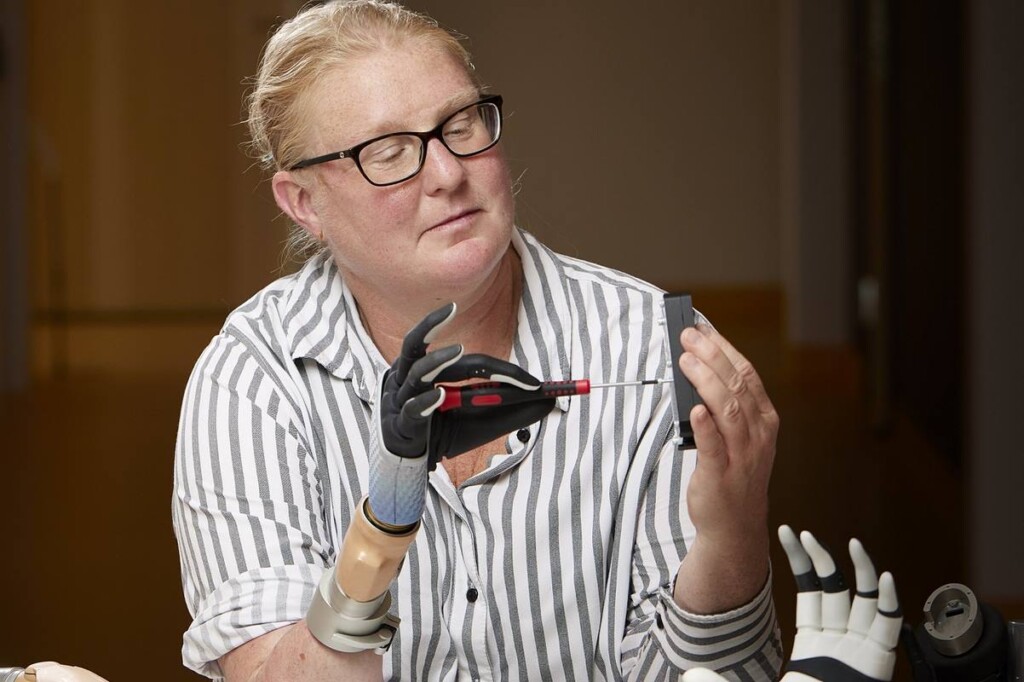Kar Kar “Karin is now using somewhat the same neural resources to control the prosthesis as she did for her missing biological hand.””The fact that she has been able to use her prosthesis comfortably and effectively in daily activities for years is a promising testament to the potential life-changing capabilities of this novel technology for individuals facing limb loss,” he added.The main challenges facing the researchers at this level of amputation were the two bones–the radius and ulna–that should be aligned and loaded equally, and the fact that not much space is available for implanted and prosthetic components.However, the team managed to develop a suitable neuro-musculoskeletal implant that allows connections between the user’s nervous system and the electronic control system of the bionic limb, which Dr. Ortiz Catalan says is responsible for the reduction in pain.PROSTHETICS HIGHER UP: Implanted Electrodes Could Offer Improved Vision for 148 Million Blind People”The below elbow amputation level has particular challenges, and the level of functionality achieved marks an important milestone for the field of advanced extremity reconstructions as a whole,” said Professor Rickard Branemark, associate professor at Gothenburg University in Sweden, and associate researcher at MIT.”By combining osseointegration with reconstructive surgery, implanted electrodes, and AI, we can restore human function in an unprecedented way.”The nerves and muscles in the residual limb were re-arranged to provide more sources of motor control information to the prosthesis, a complicated surgery done at the Sahlgrenska University Hospital in Sweden by Dr. Paolo Sassu, who previously became the first surgeon to conduct a successful hand transplant in Scandinavia.OTHER GREAT PROSTHETICS RESEARCHERS: This Man Learned Robotics on YouTube, Now He’s Creating Affordable 3D Prosthetics For Others–WATCHAs joyous as the researchers are for what this does to advance the science of their various fields, Karin says the robotic limb has improved her functionality, increased her independence, and, due to the highly advanced integration between her residual limb and her bionic one, has also massively relieved her pain.”Today, I need much less medication. The
The first person to actually receive a below-the-elbow prosthetic that fuses bone with metal and electrodes is based on the work of Finnish woman Karin. It is regarded as a potential gold standard for prosthetics and is an amazing feat of biology and robotics. This has inspired the integrative science team to think it will be accessible to others.
On Good News Network, the article” Woman Becomes Second Human to Be Fitted with Nerve and Bone Fused Bionic Limb” second appeared.
